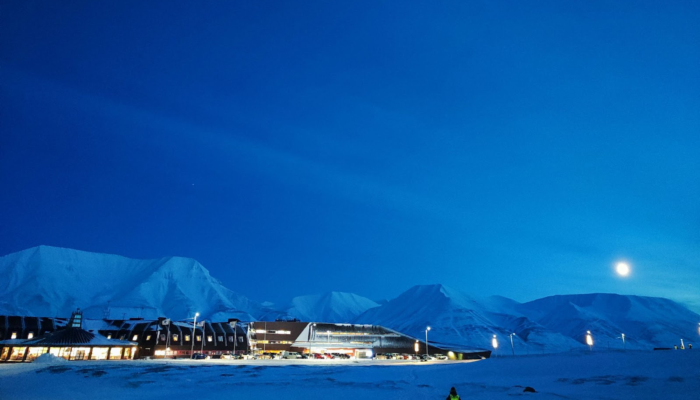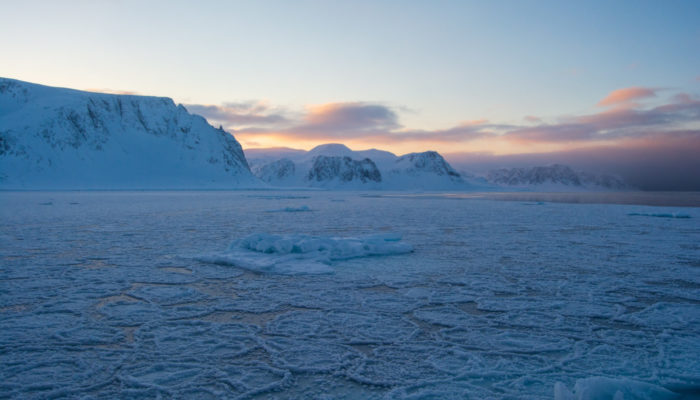The Weddell Seal pops his head up through the hole in the floor of the shipping container… for the fourth time today. The shipping container is one of several making up our field camp on sea ice, 40 km from Scott Base – situated on Ross Island, in the south-western Ross Sea. Today I talk about the sub-ice platelet layer, which provides the base for a rich marine environment. Generating super ...[Read More]
If you didn't find what you was looking for try searching again.
Cryospheric Sciences
Arctic Frontiers Emerging Leaders
Here on the Cryoblog we often talk about the impacts of climate change in the Cryosphere. So now for something completely different: how does this fit into sustainable development in the Arctic? Here, I take you on a journey through the Arctic in a round-up of the recent Arctic Frontiers Emerging Leaders program, a unique early-career and mentoring program bringing together academic, industry, ind ...[Read More]
Cryospheric Sciences
The Polar Night Week and the Svalbard Integrated Arctic Earth Observing System
In the early days of 2023, nearly 100 researchers gathered in Longyearbyen, Svalbard, one of the last permanently inhabited places before reaching the North Pole (see my previous blogpost about Svalbard). The Svalbard Integrated Arctic Earth Observing System (SIOS) held its fifth Polar Night Week. SIOS is an international partnership of research institutions that study the environment and climate ...[Read More]
Cryospheric Sciences
Did you know that thawing permafrost is impacting Arctic livelihoods already today?
Would you like to join me on a little trip up North today? We will be visiting a small community in the Canadian high Arctic – a community built on permafrost ground. This sounds pretty cool in the first place, but brings along quite a few challenges that most of us probably do not have to think about. Let me introduce you to Tuktoyaktuk, the community that is endangered to fall into the sea ...[Read More]
Cryospheric Sciences
End-of-the-year special: this year’s Cryoblog
So this is the last post in 2022 for our blog. We have decided that this time, the topic will not be another exciting story about the science of ice and cold in their various forms. This time we are talking about the blog itself, so a kind of meta-post to take stock and understand a little better how our blog works, what it is about, and who our main authors are. To this purpose, we asked all the ...[Read More]
Cryospheric Sciences
Fun Cryo Facts – Don’t eat brown snow
Scientist are curious people and we all know that the best discoveries happen by chance, so we always keep our eyes open for the unusual, the new, and the weird things in life. Especially, when we are out in the Arctic doing field work and find unknown brown layers… An unexpected discovery We were out in the Arctic, somewhere Northeast of Svalbard. It was a sunny day and we had just docked t ...[Read More]
Cryospheric Sciences
A little guide to find your way through the Cryo-Jungle?
Are you starting your studies in cryospheric sciences, or are coming into our field from another subject? If so, you may have unsuspectingly waded into a (very thick) soup of acronyms! Don’t fret–here is your “one stop shop” that tells you where to look for more information! Early Career Organisations Unless you’re fortunate enough to be working in a polar-oriented institute (some of our previous ...[Read More]
Cryospheric Sciences
Did you know that snow is hot?
When I was a student, Martin told me matter-of-factly that snow is hot. I probably looked as baffled as I felt (and you are probably doing the same). Were we talking about the same thing? Continue reading to discover why snow is hot! Discovering that snow is hot So why is snow hot? Most snow under Earth’s environmental conditions has a homologous temperature Th close to 1. The homologous temperatu ...[Read More]
Cryospheric Sciences
Cryo History – Extent of South Georgia Glaciation during the Last Glacial Maximum
There has been considerable disagreement amongst researchers concerning the extent of South Georgia’s ice sheet during the Last Glacial Maximum (LGM). The sub-Antarctic islands (those below the polar front) may have been completely glaciated during previous glacials, and the last largest extent of the South Georgia ice sheet was during the LGM, about 21,000 years ago. But glaciologists don’t agree ...[Read More]
Cryospheric Sciences
More pancakes in the future!
More pancakes in the future – that sounds like a very good New Year’s Eve resolution for Sunday brunches, but it could also be a development of the most tasty looking sea ice shape in the Arctic. Let’s find out more! Arctic Sea Ice The growth and melt of Arctic sea ice follows a seasonal cycle. In the springtime, under the midnight sun, the sea ice begins to melt until it reaches its m ...[Read More]










